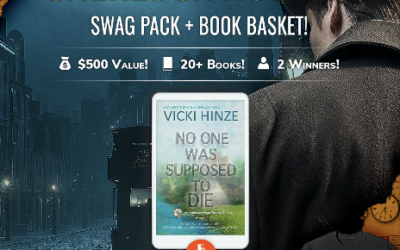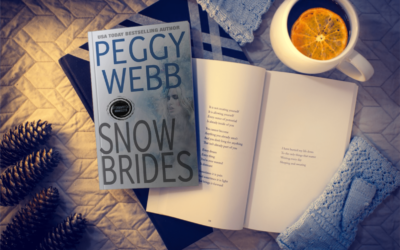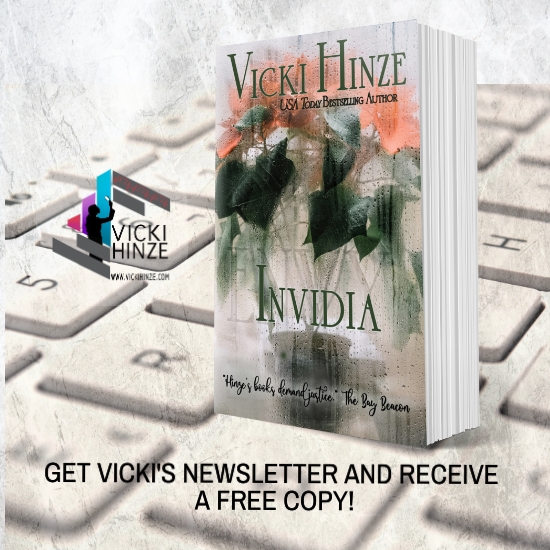Vicki Hinze © 2003-2011
(Blog Post)
Ineffective dialogue will have your reader hurling your book into the trash—if you have a book. But you won’t. For all your efforts, instead the edict will flow from hallowed publishing halls: Rejected!
But used effectively, dialogue is a powerful tool.
WHAT MAKES DIALOGUE EFFECTIVE?
Effective dialogue moves the plot forward. It deepens, or layers, characterization. It creates immediacy and intimacy, and it subtly conveys information and emotions capable of sparking reader empathy.
KEYS TO EFFECTIVE DIALOGUE
* Emulate real life. Don’t “sound” stiff or formal. When relaxed, sound relaxed.
While we ant dialogue that “sounds” real, we don’t want to depict real-life conversation. It contains too much useless chatter. Translated to “book-talk,” it’s boring, flat, and a criminal waste of good space. That translates to no sale.
* Say something. Don’t permit your characters to ramble aimlessly. What they’re saying must serve a function. The greater the task, the more effective the dialogue. For example, if your dialogue moves the plot forward, creates or adds to an existing conflict, and discloses something new about a character, then it is working hard. Dialogue should work hard; the more functions it serves, the more it aids in strengthening the story.
* Set the pace. Manipulate the story’s pacing with dialogue. Don’t ignore the emotional state of your character. If she’s upset, don’t let her think deep thoughts, or speak in long sentences. We’re human. When upset, we speak in fragments. Clipped tones. To convert the emotion to the writing, use short, terse sentences and paragraphs.
o Forceful verbs.
o No frills.
o No fluff.
o Nothing to slow the reader down.
o This technique quickens the pacing. The reader reads faster, thus senses urgency.
o Conversely, to slow the pace during tender, poignant moments, do the opposite—allow your characters to think longer, more leisurely, unhurried thoughts, and let them speak in flowing, sensory-oriented sentences that slowly drift down the page.
This tool conveys a character’s emotions to the reader, gains reader empathy. And reader empathy translates to sales.
* Characters ain’t clones. Don’t permit your characters to all sound alike. A New Yorker fresh off the pages of GQ isn’t likely to speak with a drawl or to call his heroine Sugar Lips. A mechanic isn’t apt to use the verbiage or speaking patterns of a corporate CEO, or of a football jock. Keep the language (verbal and non-verbal) true to the character. Respect him by not stripping him of the things that make him a unique individual. The way each character speaks should be natural to that character. If it isn’t, then you, the author, have insulted the character and the person you actually portrayed: a lose/lose proposition bound to irk readers.
* Dialect isn’t a dirty word. If appropriate, use dialect. But remember that a little goes a long way. A sprinkle enhances, but too much distracts. Dialect is unfamiliar and hard to read–not the backbone elements of selling novels.
* (Don’t) say what? Unspoken dialogue can, at times, be the most powerful dialogue of all. When a character says the opposite of what she means, or says nothing at all, just looks away. This too is effective dialogue.
* Body Language. Dialogue isn’t just what we say, it’s also what we don’t say, and how we don’t say it. Have you ever said “Yes,” when you meant, “No?” Ever said, “Yeah, right,” in an argument, when what you really meant was, “Don’t be stupid, you jerk?”
Call it sarcasm, or white lies. Call it unspoken dialogue. Or call it body language.
So how do you convey this unspoken dialogue in your writing? How do you make it clear to the reader that, although your character is saying, “Yes,” she means, “No?” You incorporate appropriate body language.
Here’s a sampling:
* Angry?Fisted hands. Narrowed eyes. Stiff posture. Clenched jaw. Slashed mouth.
Jerky movements. Rough handling of objects.
* Happy? Smile. Wink. Twinkle in eyes.
* Relaxed? Sprawl. Loose-limbed.
* Crowded? Back up. Create physical distance between the characters.
* Interested? Lean forward, draw closer to whomever is speaking.
* Questioning? Cock head. Widen eye. Elevate voice. Hands lifted, palm up. Hiked shoulders.
* Nurturing? Clip a loose thread. Pat.
* Tender? Stroke, touch, lips parted.
* Nervous? Pace, scratch, rub your arms.
* Stunned? Wide-eyed. Stone still. Hand to chest, fingers spread. Gaping jaw.
* Sad? Tears. Listless. Hand curled to chest. Shoulders slumped. Fetal position.
* Trusting? Palm open.
* Lying? Avoid eye contact. Dipped chin.
If you’ve not already, consider studying Body Language by Julius Fast. Because the unspoken language is often more truthful than what’s actually said.




